A distant dream of setting up a restaurant for his father has led to Bhupender Nath now owning seven restaurants, including one which has won two Michelin stars in Dubai. Under his brand, Passion F&B, Bhupender Nath founded the wildly successful, Michelin-starred Tresind in Dubai and Mumbai in 2014. Global Indian goes behind the scenes with the maverick entrepreneur to deconstruct the workings of Tresind, and its modernist, fusion take on traditional Indian cuisine.
(July 30, 2023) Disillusioned by a lack of career prospects in Patna, Bihar where he hails from, Bhupender Nath left for Nigeria to earn a living that would clear his father’s debts. He set up a successful fisheries business in Nigeria eventually, before moving to Dubai. The dream of wanting to someday own a restaurant, in his native Bihar, had him grabbing the opportunity to set up a restaurant in this multi-cultural hotpot when he got the chance.
Making Indian food truly modern
Nath, in an exclusive with Global Indian, recalls, “We set up Tresind Dubai, in 2014, at the Royal Mirage Hotel. We were presenting modernist Indian cuisine. By skillfully blending traditional Indian flavours with ingredients and techniques from around the world, we created a culinary experience that was familiar yet delightfully unexpected.”
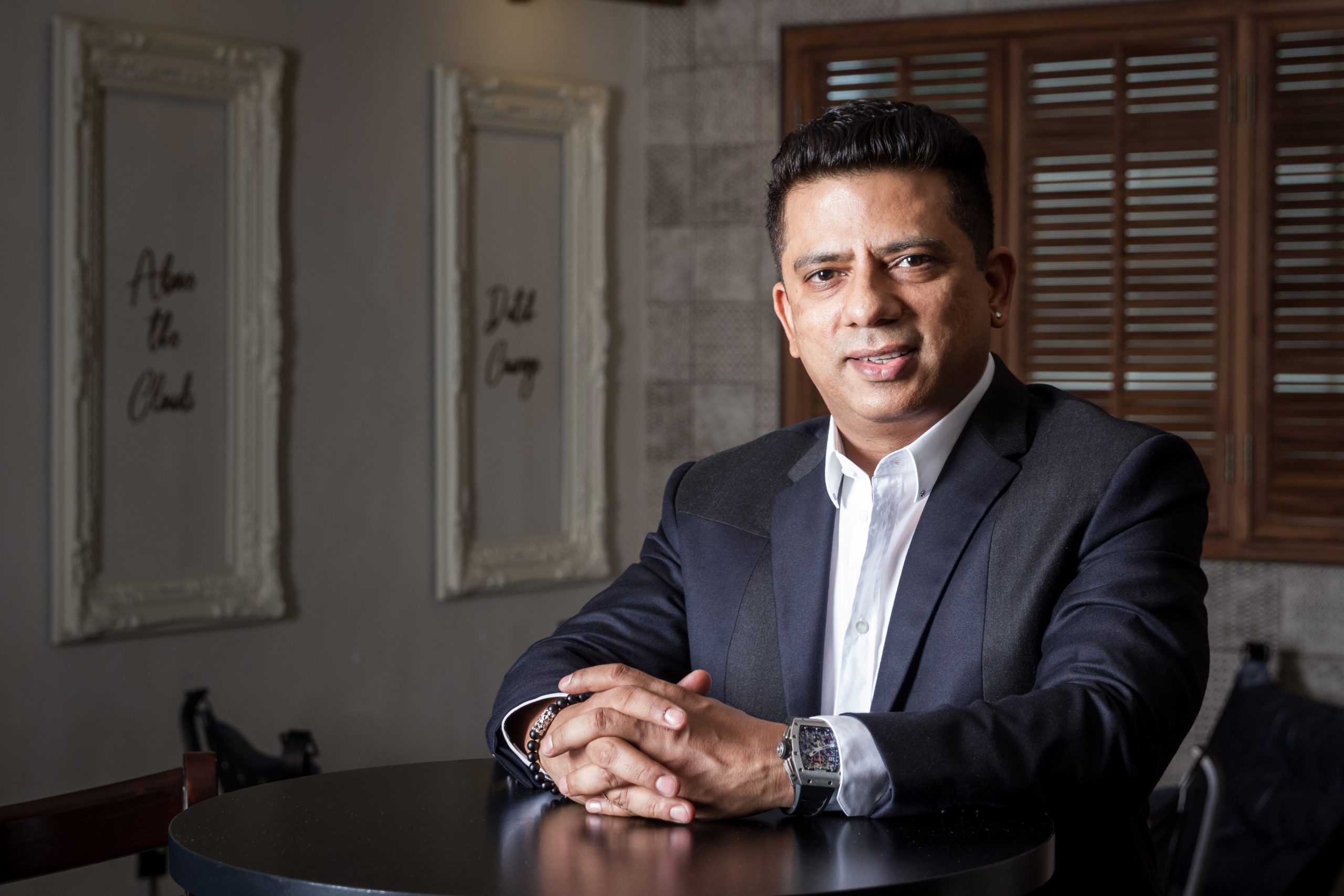
Bhupender Nath, founder of ‘Passion F&B,’ is the brain behind Michelin-starred TresInd, Dubai and TresInd, Mumbai.
The restaurant presents Indian which essentially turns the concept of the traditional dish on its head. Khandvi Gelato, a savoury frozen dish and a frothy Dhokla Gazpacho are just some of the truly innovative dishes Chef Himanshu Saini has created.
Seven wonders of Passion F&B
Nath’s main focus, for all the seven restaurants, is “to offer a unique dining experience, showcasing the diversity and creativity of our team.” Tresind was followed by the uber-successful Tresind Studio, nestled within the picturesque gardens of the terrace of the St. Regis Hotel in Palm Jumeirah. Here too, the team challenges the norms and has redefined perceptions of Indian cuisine. Due to its innovative presentations and inventive flavour combinations, Tresind Studio has also won a Michelin Star last year, 2022, and this year, 2023. Its most recent accomplishment is being listed as the 11th restaurant in the 50 best restaurants of the world.
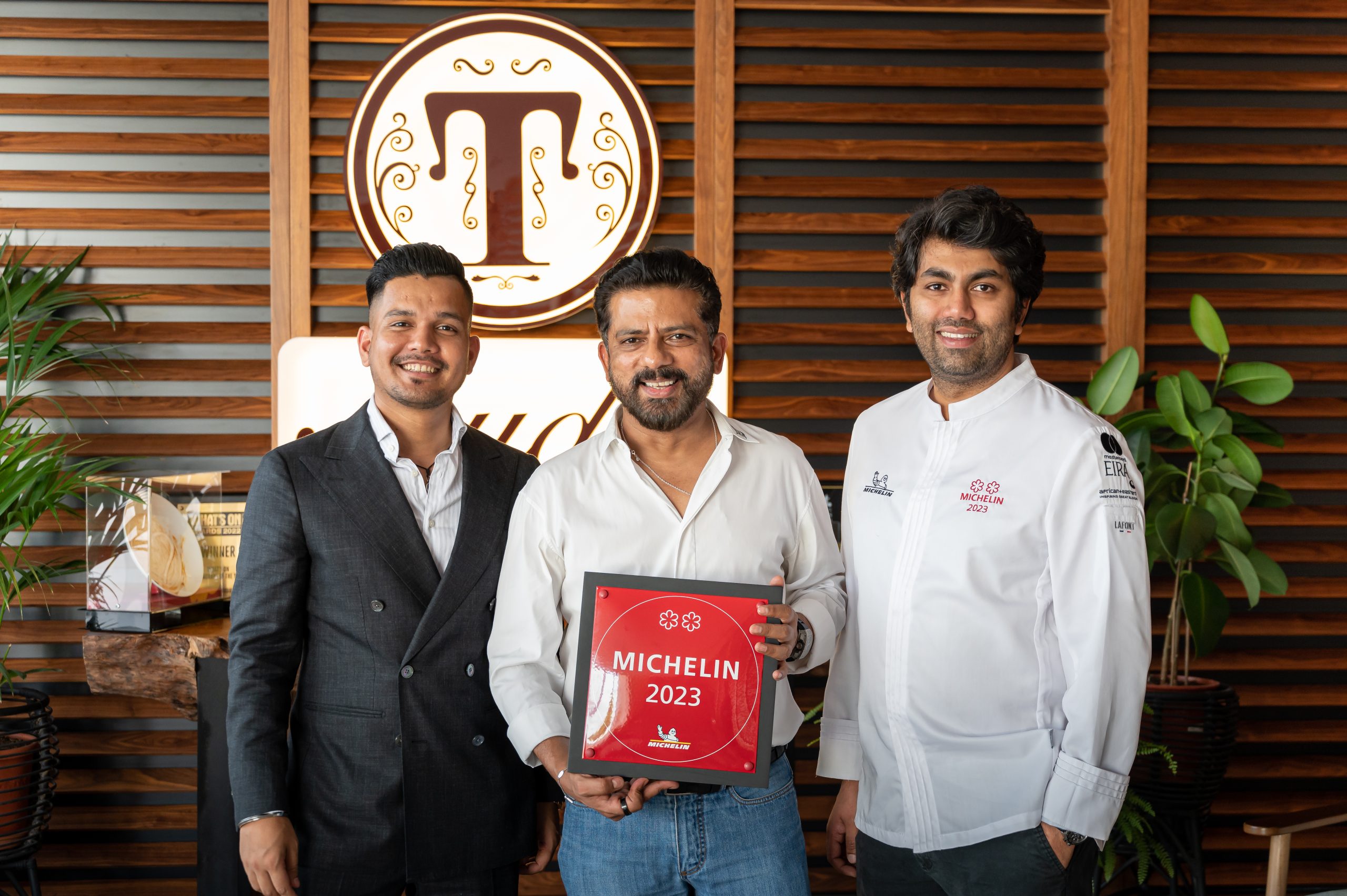
Bhupender Nath with the team at Tresind Studio that has won a Michelin Star last year, 2022, and this year, 2023.
The current dining experience, celebrating India’s 75th year of Independence has a set menu called Tasting India. Divided into four regions, North, South, East and West, the menu incorporates traditional Indian dishes with cooking techniques from all over the world. It includes shiso leaf papadam, where the leaf is used in salads, and is known as bhanjeera in India; miso and chilli tartlet, persimmon jalebi and a Himalayan pink salt ice cream. An artichoke cafreal, made with duck meat for non-vegetarians, ghee roast crab, tender coconut khimchi, and pickled pepper, and buttermilk curry ice cream are other dishes underlined with a global influence. The ingredients that are not available locally are sourced from other countries and are flown in cold storage to keep them fresh.
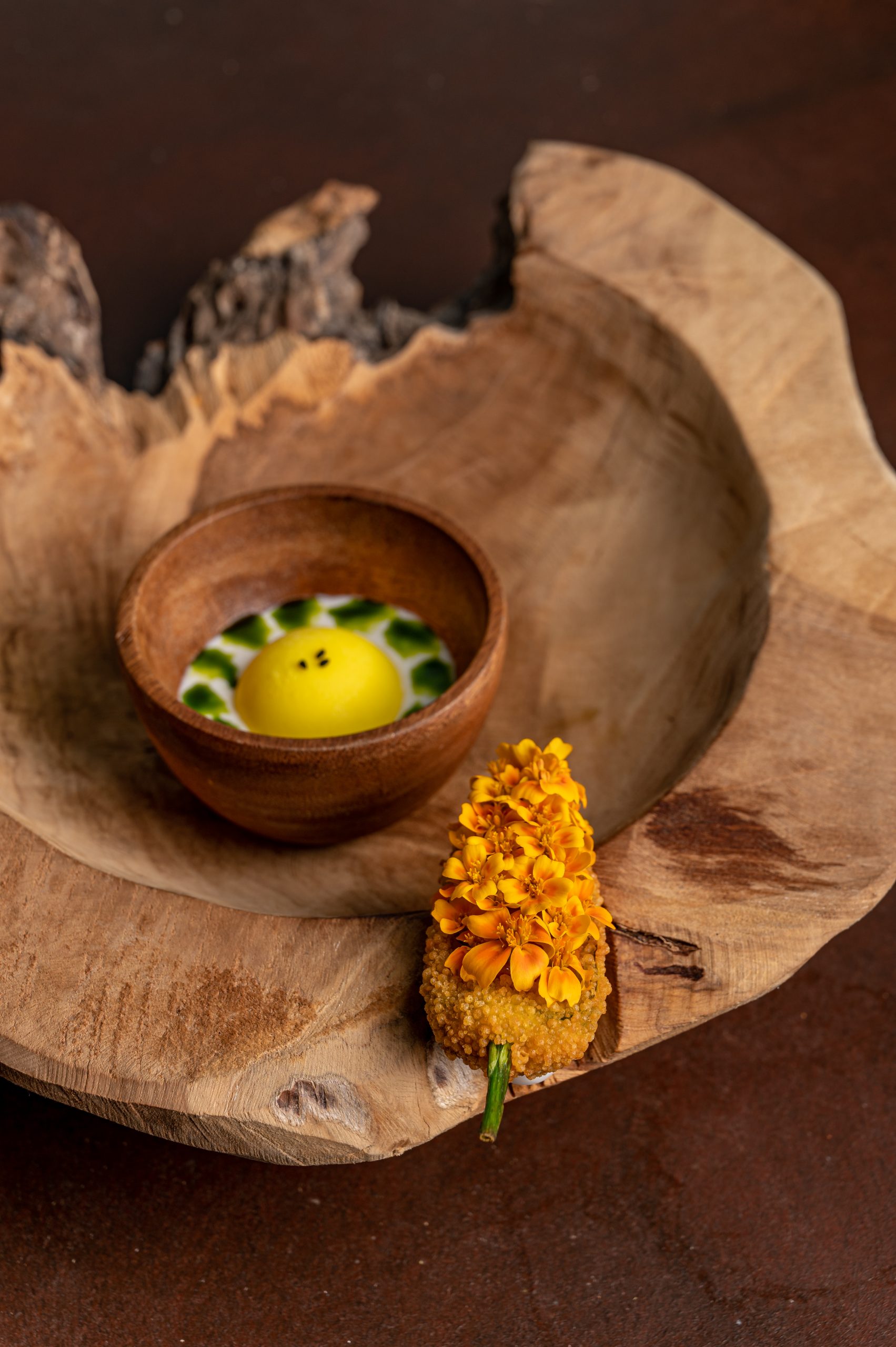
Pickled Pepper, Buttermilk Curry Ice cream.
One of the signature dishes that has become popular at Tresind is the 20-ingredient vegetarian khichdi. The age-old comfort food is served with different accompaniments —and is a representation of multiple Indian flavours in one meal. Saffron from Kashmir, papaya sambhariya [the raw papaya gram flour dish usually had with farsan] from Gujarat, ghee from Punjab and other ingredients sourced from a whopping 20 Indian states is served on a plate fashioned after the map of India. For most Indians, this reinvented avatar of a khichdi would make for a delightful experience.
Celebrating India
Other restaurants established by Nath, under the aegis of his company Passion F & B, are Carnival by Tresind, serving contemporary Indian cuisine; Gala is the catering arm of Tresind Studio, A Cappella, an international tapas bar, and the sattvic and vegan Avatara, located on the second floor of Voco Restaurant. It has now come to be known as Dubai’s best vegetarian fine dining establishment. “Here, a meticulously curated 16-course meal takes vegetarian cuisine to new heights, showcasing the limitless possibilities and the sophistication of plant-based gastronomy,” reveals Nath. Avatara has also been awarded a Michelin star this year.

Galouti Kofta and Pickled Kohlrabi Quince Curry.
Next to come was Aamara, which celebrates the culinary heritage of the Silk Route, embodying the fusion of Indian and Arabic flavours. Here, the food is a blend of the spices that were once traded along this historic route. Nath adds, “The newest addition is Maison De Curry, which offers a medley of spices. This restaurant showcases the diversity and depth of flavours that make Indian cuisine so cherished.” Aamara, less than a year old, has been listed in the Bib Gourmand of the Michelin Guide which lists restaurants that serve food at relatively less than exorbitant prices. A meal for two at Aamara would cost AED 300.
Among all the restaurants owned by Nath, Tresind Studio as a fine dining restaurant is the most exclusive. A meal for two would cost AED 2000, and it is served to a limited number of guests each day.
Through all his restaurants, Indian cuisine predominantly remains the foundation on which creativity and innovation are the twin pillars that the curated menus rest on. Having said that, Nath brings his own global exposure and influences to the menus along with his team. Elsewhere in an interview, he had said that their restaurants don’t serve butter chicken in buckets or have elephants at the entrance. The dishes are innovative all the way. He says, “Our aim is to challenge stereotypes and offer a unique perspective on Indian cuisine that appeals to a global audience. By infusing our menus with international influences, we create a harmonious fusion that celebrates the best of both worlds.”
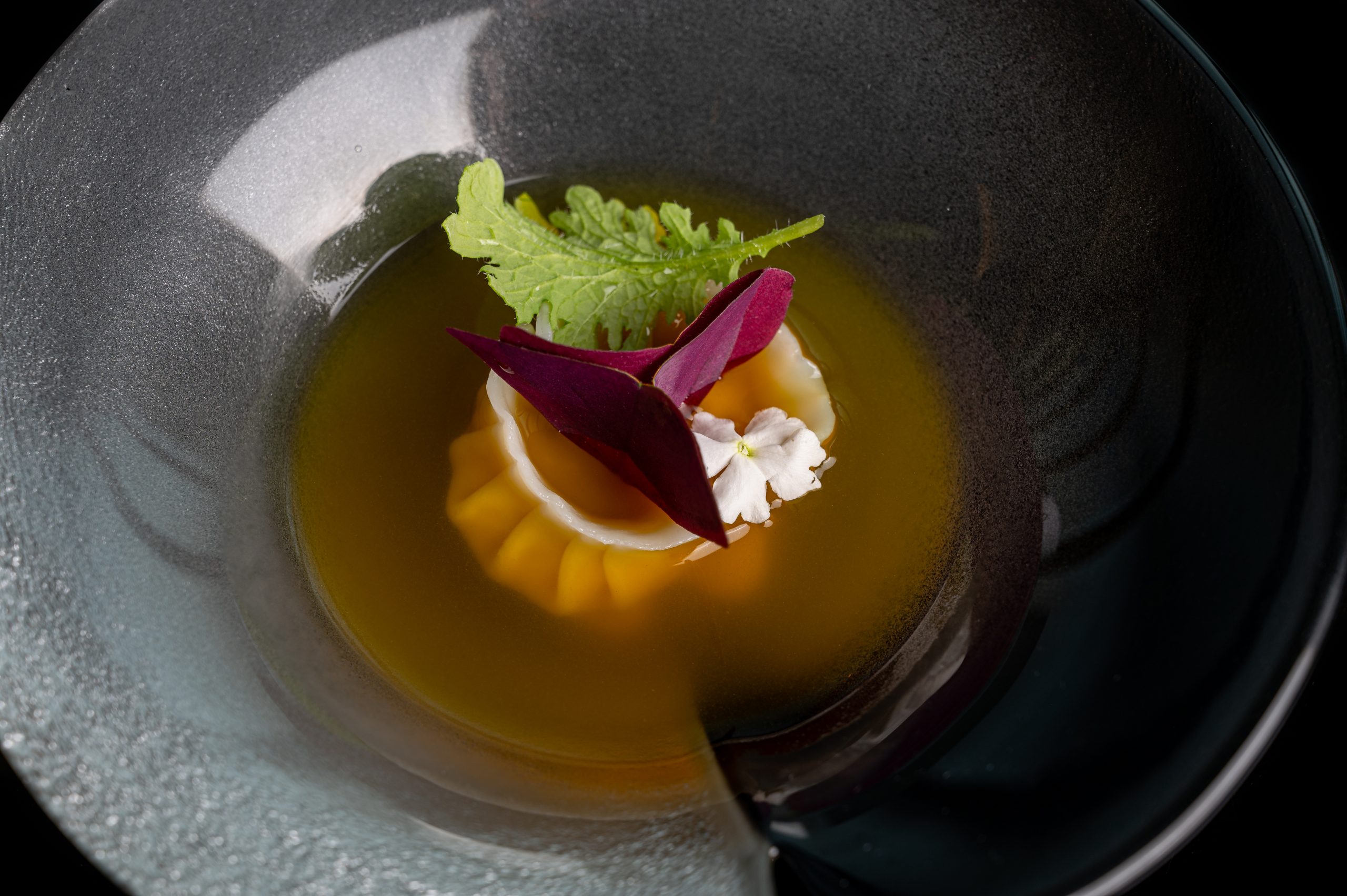
Puran Poli and Shrimps Sour Lentil Broth.
Another feather in Nath’s multi-restaurant cap would have to be the fact that he has launched Tresind in Mumbai to great success. It usually works the other way where a homegrown brand goes overseas after testing the markets in India. He reveals why he went the opposite way. “While many restaurants start in India and expand globally, we saw an opportunity to introduce our innovative concept to Dubai’s diverse culinary landscape first. Dubai’s cosmopolitan atmosphere and openness to culinary exploration made it the perfect launchpad for Tresind. Then, we felt the time was right to bring our culinary vision to Mumbai. As a city known for its vibrant food culture and discerning diners, Mumbai offered an ideal setting to showcase our creative approach to Indian cuisine.” In fact, Carnival and Avatara too will be launched soon in Mumbai.
Creativity and the chef
Tresind Studio and the other restaurants would not perhaps have been what they are had it not been for their brilliant Corporate Head Chef of Passion F & B, Himanshu Saini. Nath had known him from the time when Chef Saini worked at Masala Library in Mumbai followed by a stint in New York. He says, “One of the management styles that has worked for me is empowering my team and giving them the freedom to showcase their expertise and creativity. By allowing Chef Himanshu Saini and other talented chefs to have a free hand in the kitchen, we have been able to create exceptional culinary experiences. Consistency is also a key factor in our success, and we strive to maintain high standards across all our restaurants. We have a strong focus on training, quality control, and attention to detail to ensure that every guest receives an outstanding dining experience.”
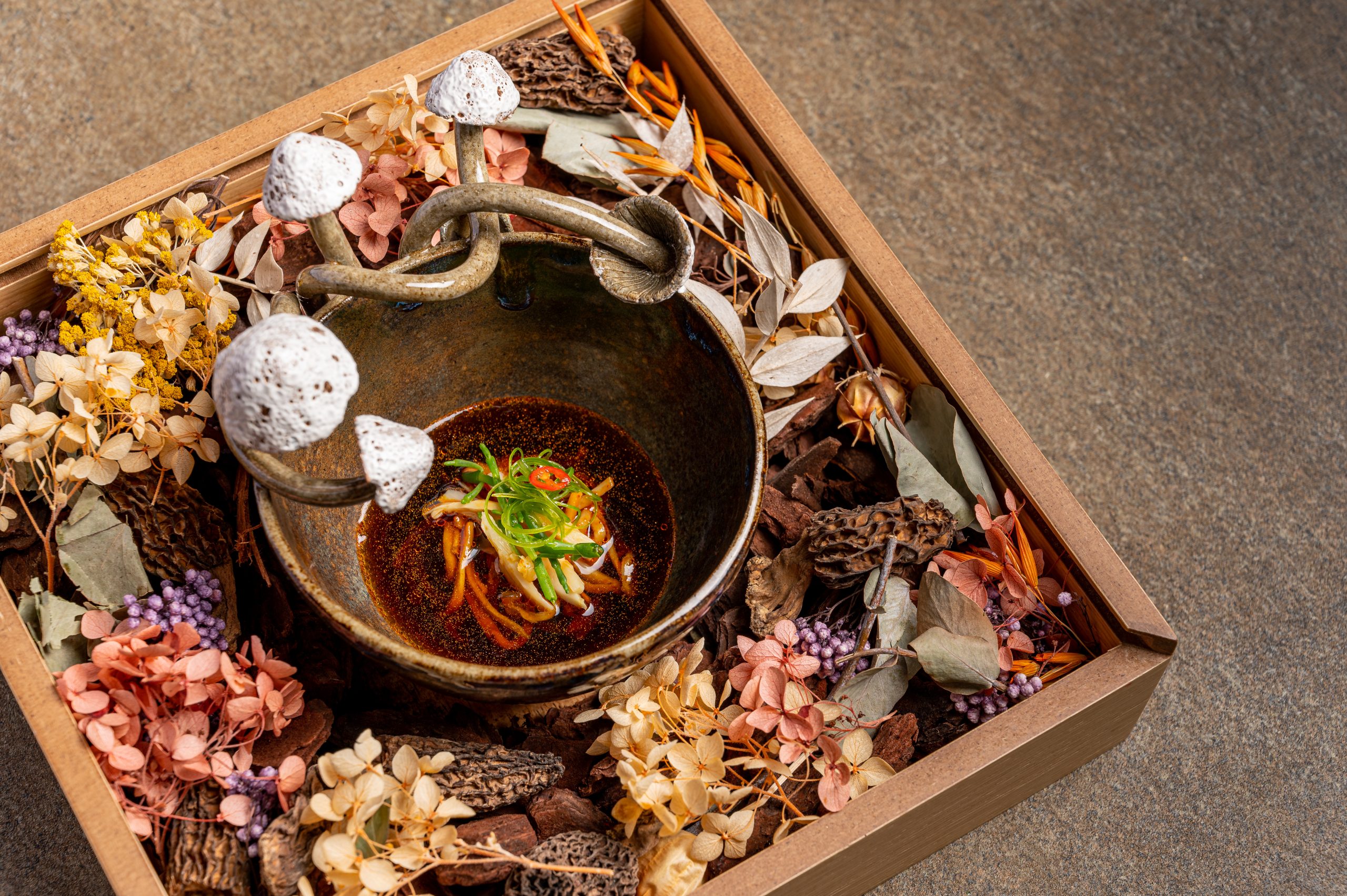
King oyster noodles, bamboo shoots and wild mushroom XO.
When asked which of his brands is his personal favourite, he says he chooses to dine based on “my mood and preferences at that moment. If I’m in the mood for vegetarian cuisine, I’ll head to Avatara, and if I want to indulge in a fusion of Indian and Arabic flavours, I’ll visit Aamara.”
As for the clientele, when the menu lists a khichdi with 20 ingredients or an Indian meal in 18 courses – do these concepts attract as many Indians as they do other nationalities? Nath reiterates that Indians make for a sizeable chunk of their guests. “All this creativity and innovation appeals to Indians and foreigners as well. Specially in the case of Avatara, where we believed the majority of our guests to be of Indian descent. We are seeing more and more of European guests who are into veganism,” he concludes.
Next big food trends:
Eating organically grown food and veganism
Your favourite restaurants for:
- Indian fine dining – Tresind Studio
- Indian street food – Raju Omlette
- Mediterranean/Italian – Nammos
- Pan Asian – Zuma



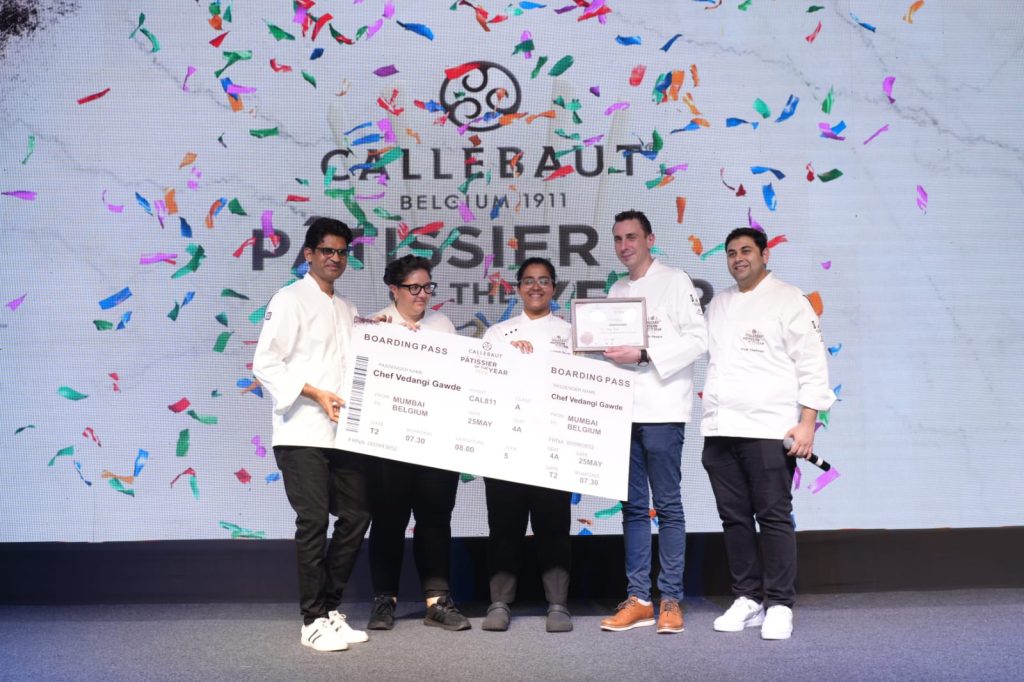 Vedangi Gawde is the winner of the Callebaut Patissier of the Year 2024 award[/caption]
Vedangi Gawde is the winner of the Callebaut Patissier of the Year 2024 award[/caption]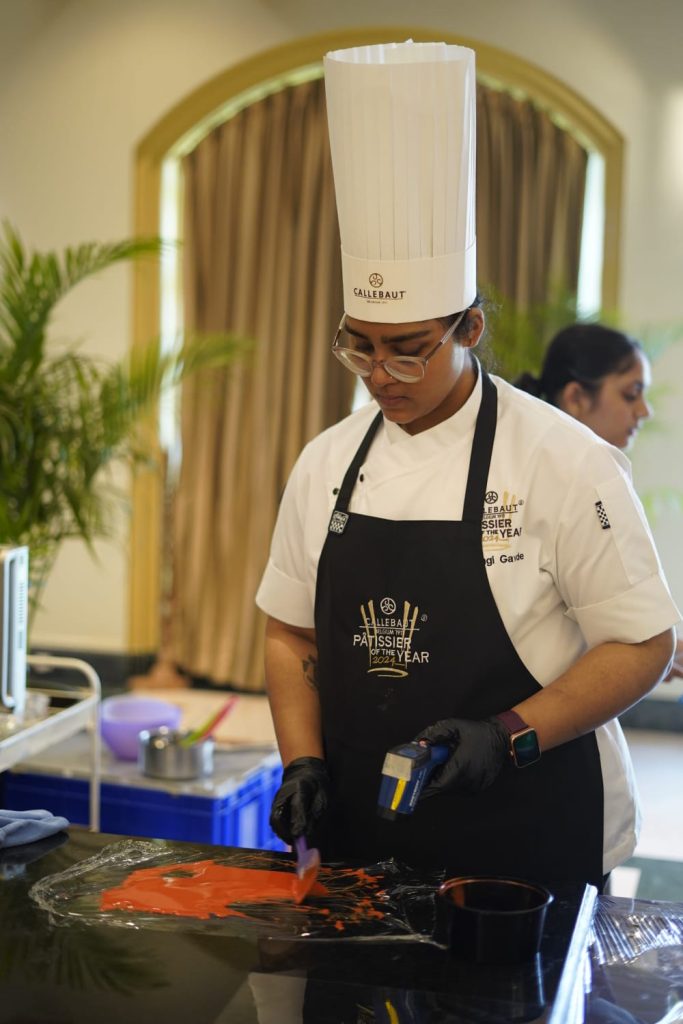
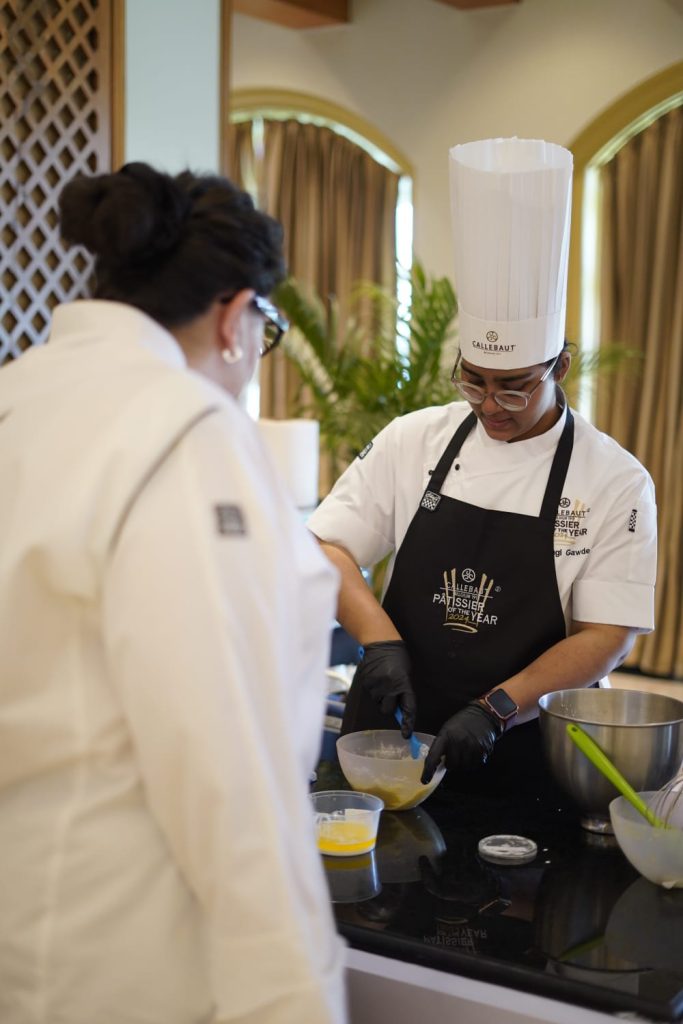

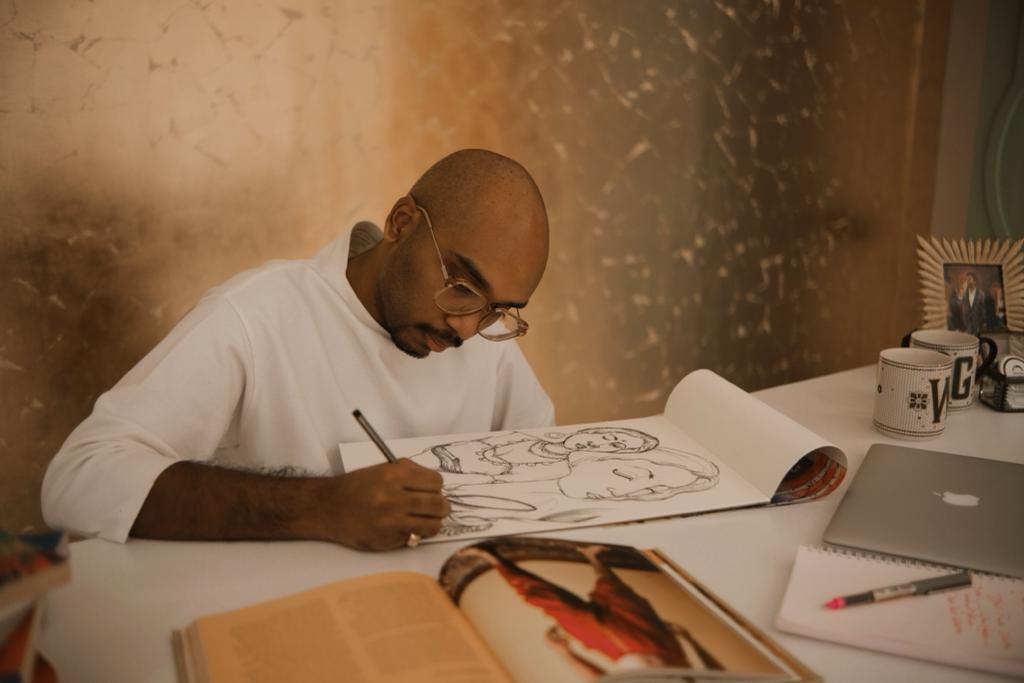 Venkat Gaddam[/caption]
Venkat Gaddam[/caption]
 Feroze Jahan Begum with her husband, Syed Abbas, during their wedding in Hyderabad.[/caption]
Feroze Jahan Begum with her husband, Syed Abbas, during their wedding in Hyderabad.[/caption]
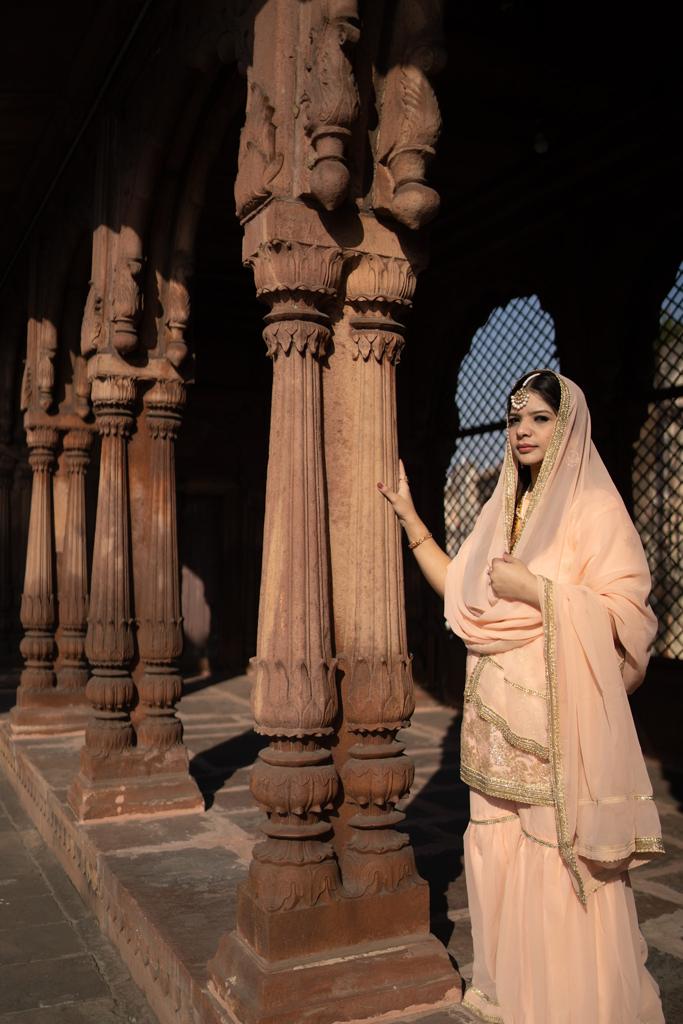
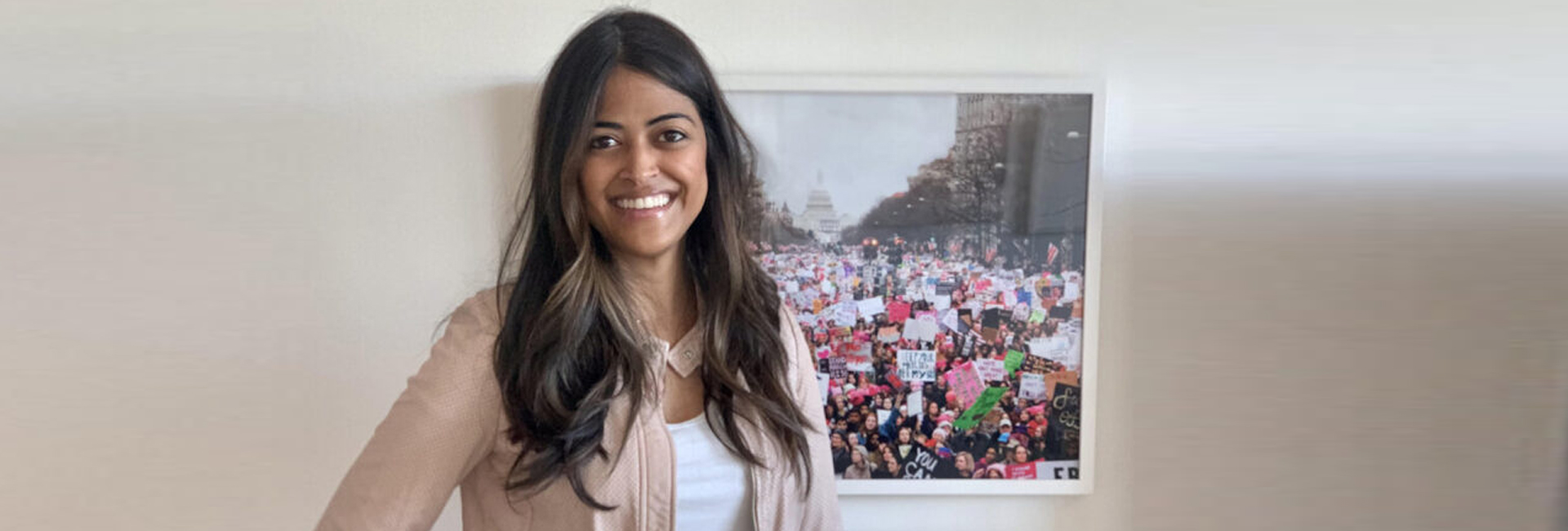
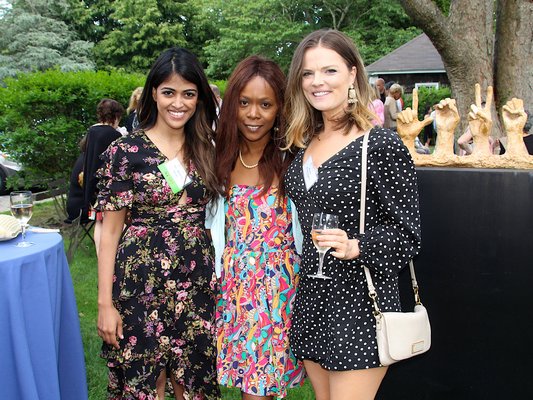 Dr Shah with her friends[/caption]
Dr Shah with her friends[/caption]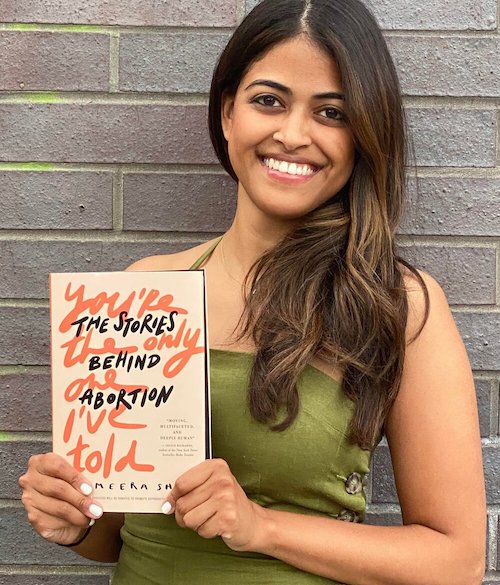

 Anurag Shanker[/caption]
Anurag Shanker[/caption]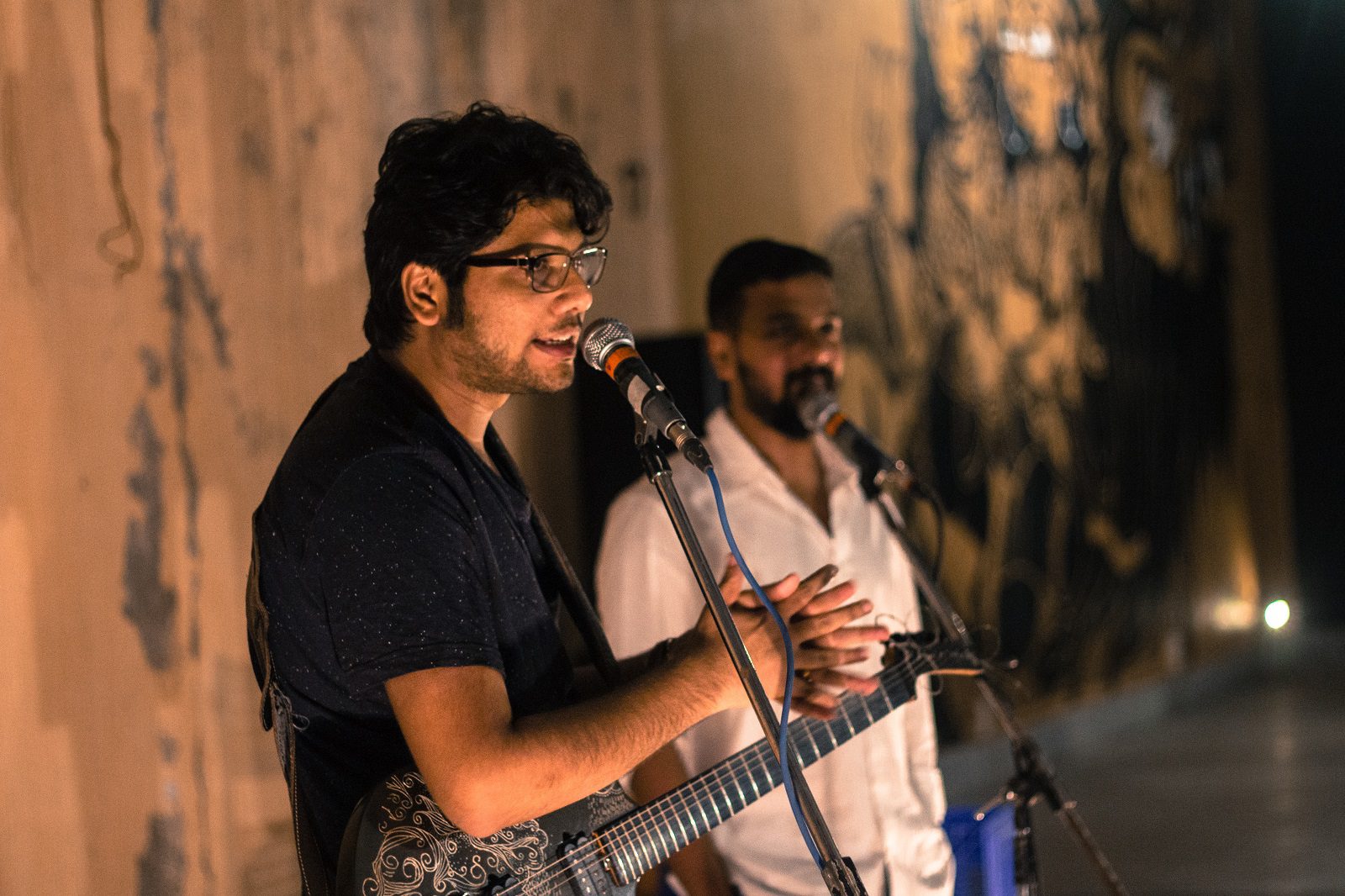 Live with Namit Das. Picture: Vaishnavi Suresh[/caption]
Live with Namit Das. Picture: Vaishnavi Suresh[/caption]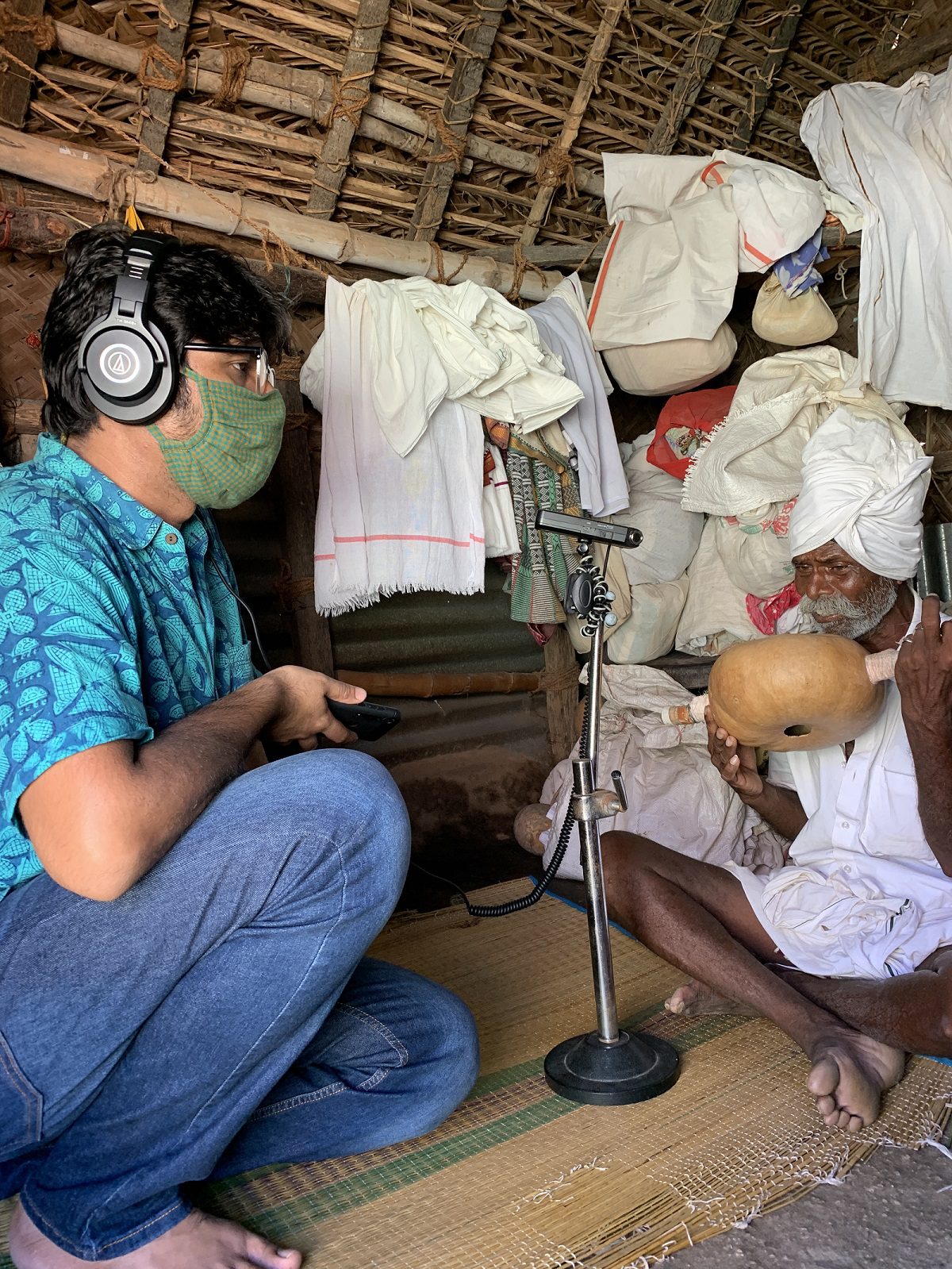 The composer recording Kinnaram from Tamil Nadu[/caption]
The composer recording Kinnaram from Tamil Nadu[/caption]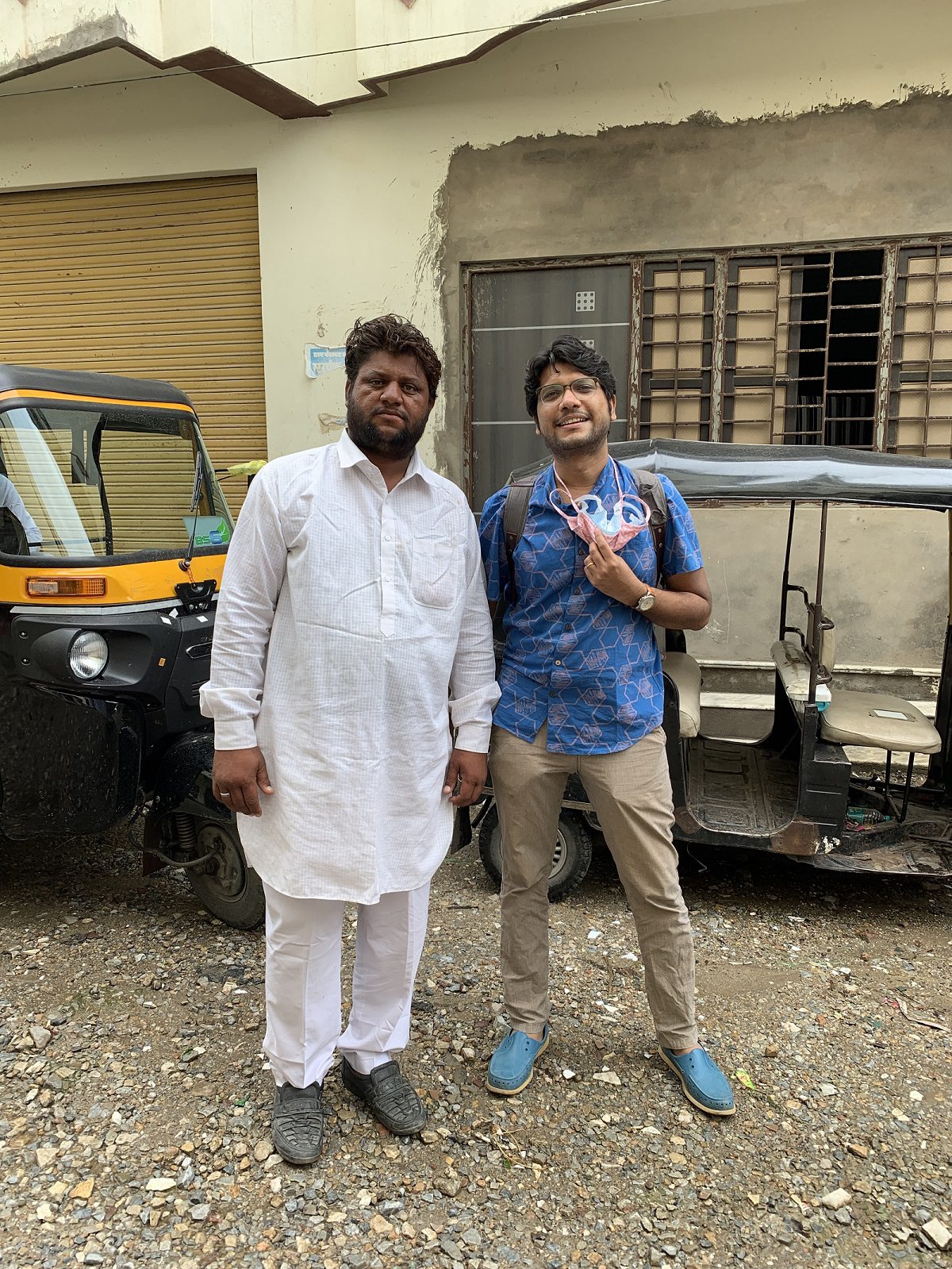 Anurag with Manganiyar singer Peeru Khan[/caption]
Anurag with Manganiyar singer Peeru Khan[/caption]